LINGUIST

LIFTING SANCTIONS: A NEW START FOR SUDAN
p.3
THE 'GAP YEAR’ CRAZE LIBERATING CHINA’S YOUTH

p.6
THE VERY BEST OF FOOD AND DRINK IN MOSCOW
p.8
FEATURED LANGUAGE SECTION - SWEDISH
p.10









LIFTING SANCTIONS: A NEW START FOR SUDAN
p.3
THE 'GAP YEAR’ CRAZE LIBERATING CHINA’S YOUTH

p.6
THE VERY BEST OF FOOD AND DRINK IN MOSCOW
p.8
FEATURED LANGUAGE SECTION - SWEDISH
p.10







Far East Elation - Hamaad Karim
ofers thoughts on the vast rainforests and tropical climate of Malaysia - Page 5
CHAIR: MARY MCGOWAN
SECRETARY: SARAH
DANIELS
TREASURER: BORIS GENOV
CREATIVE DESIGNER: ZOE
LUMSDEN
PUBLICITY OFFICER +
PORTUGUESE: VALENTINA
K SOMERS KOHLI
SOCIAL SECRETARY +
UKRANIAN: YELYZAVETA
LIZZIE KOZII
PROOF READER: REBEKAH
QUIXANO HENRIQUES
PROOF READER + LIFE &
STYLE: KSENIYA
SHRIMPTON
CURRENT AFFAIRS: TOM
SHACKLOCK
TRAVEL + CHINESE:
HANNAH MEI
CULTURE: MATTHEW
BRUCE
FOOD & DRINK: LIBBY
BARRETT
FRENCH + SPANISH: EMILY

DARBY
GERMAN: JENNY NICHOLLS
RUSSIAN: CHARLOTTE
SIMPSON
ITALIAN: CLAUDIA
GHILARDI
CATALAN: STEWART
TUNSTALL
ARABIC: HECHAM MUHRA
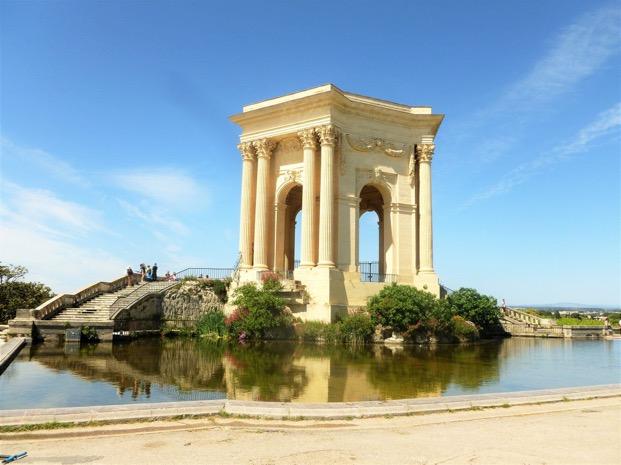
As the days get shorter and another semester draws to a close,we bringyou thenext issue of The UoB Linguist Magazine, full of fascinating insights by our writers from all over the world.
Issue 24 kicks off with a brief look at the situation in Sudan by Current Affairs editor Tom Shacklock, before travelling around the far East, and then heading to Moscow for some traditional Russian delicacies. Our language sections are as lively and buzzing as ever; if you’re a fourth-year student experiencing the postErasmus blues, have a read through and live vicariously through other people’s adventures.
As well as all of our normal sections, this issue contains a few new features for you to explore: Olivia Halsall’s article on page 6 comes from a project she undertook whilst on her year abroad to see China through the eyes of its citizens, and we’ll be
featuring extracts from Olivia’s work over the course of this year. We also have an exciting collaboration with S.A.T.N.A.V. magazine, which you can find on the back cover; we’re taking part in an article swap, so keep an eye out for the sister article written by us in the next issue of S.A.T.N.A.V.! Our new ‘Featured Language’ section also launches this issue, so take a look at Josephine’s article in Swedish on page 18 if you’re up for a challenge. Finally, if you’re in need of a light-hearted respite after 8 weeks’ worth of lectures, you can find a travel-related crossword on page 7 created by our brand-new puzzles editor Rob Hunter. Answers will be posted on our website!
We’re always open for new submissions so if you’ve been inspired by some of the excellent writing in this issue and you’d like to share your own adventures, get in touch using the contact details listed to the right – we’d be delighted to take you on board the UoB Linguist Magazine team. For now, happy reading!
PAGE 3: CURRENT AFFAIRS
PAGE 4: CULTURE
PAGES 5 & 6: TRAVEL
PAGE 7: LIFE & STYLE
PAGE 8: FOOD & DRINK
PAGE 9: FRENCH
PAGE 10: SPANISH
PAGES 11 & 12: GERMAN
PAGE 13: PORTUGUESE
PAGE 14: CATALAN & UKRAINIAN
PAGE 15: ITALIAN
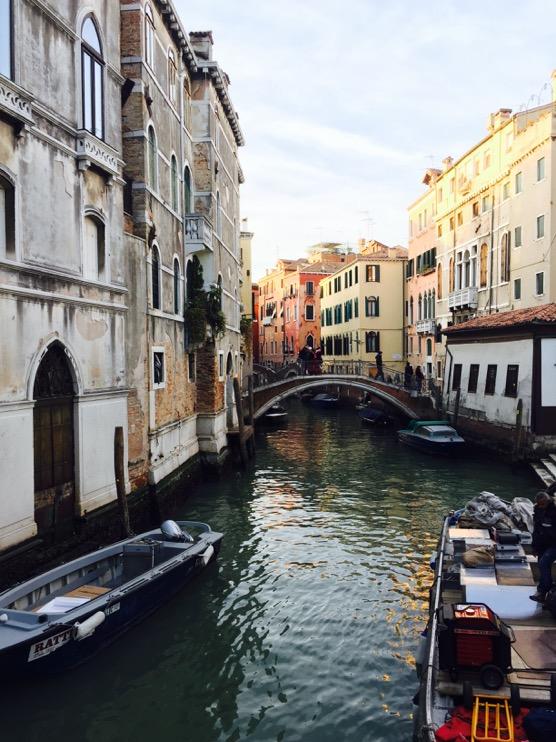
PAGE 16: CHINESE
PAGE 17: RUSSIAN
PAGE 18: FEATURED LANGUAGE - SWEDISH
PAGE 19: S.A.T.N.A.V.
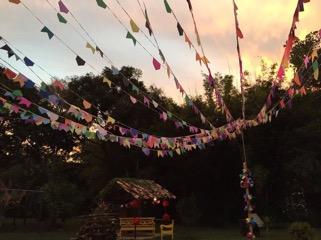


If you would like to know more about our magazine, our writers or have comments to make about our articles then feel free to check out our Facebook and Twitter pages or email us. If you wish to read more articles check out our website. We’re always looking for new writers and contributors, so don’t hesitate to get in touch!
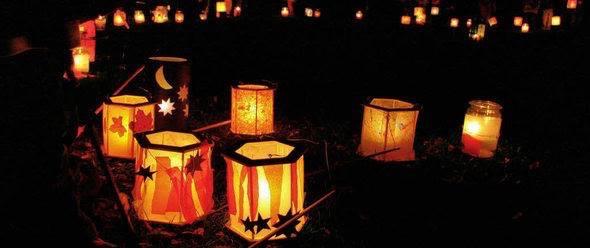
Economic sanctions from abroad are doubly painful for civilians already facing oppression from their government. However, it can also be doubly relieving when sanctions are lifted for a government's improved treatment towards its people. Sudan is the latest example of such a transition. It has endured economic sanctions from Washington since 1997 for supporting global terrorism, violating human rights and interfering with neighbouring countries’ politics. Its citizens have borne the brunt of isolated businesses, on top of the violence, ethnic cleansing and genocide that led to the sanctions. This October, Sudan made the headlines for being freed of those sanctions, twenty years later.
Different presidents who have taken office in the White House have modified these sanctions towards Khartoum, Sudan’s capital, at different lengths. It was Bill Clinton who first introduced them in 1997, while in 2006 George W. Bush tightened them, further targeting individuals involved in Sudan’s conflicts. Barack Obama then decided, at the end of his presidency in January 2017, to water down these sanctions, promising that Trump’s administration would have them completely lifted. Obama’s promise has finally been fulfilled by his successor.
By Tom ShacklockThe misery that the Sudanese have lived in has been severe. The North-East African country had already been in a civil war since 1985, a conflict which mainly concerned the south and continued until 2005. (South Sudan since became an independent country in 2011). In 1989 there was a coup d’état, where Omar Hassan alBashir became President and has remained so to the present day. Since his succession, he has created enough misery in Sudan to face arrest warrants from the International Criminal Court. The main reason for Bill Clinton’s sanctions in 1997 was that Sudan’s government was supporting such terrorist groups as al-Qaida, as well as abusing human rights at home. Following the implementation of these sanctions, Sudan had other problems on the horizon. In 2003, war broke out in the Darfur region, when the Sudan Liberation Army (SLA) and the Justice and Equality Movement (Jem) accused Khartoum of oppression towards black Africans and favouring Arabs. Al-Bashir denied connections with the Janjaweed, the Arab militia driving black Africans out of the region. He’d therefore have to explain the Janjaweed attacks that ‘coincidentally’ followed government air raids reported by refugees.1 This conflict has been classed as a genocide, with accusations of ethnic cleansing. According the UN,2 it led to 300,000 deaths and 2.7 million civilians fleeing for refuge. This is but a snapshot of the bloodshed the Sudanese have experienced. Conflict has also touched regions like the Blue Nile and South Kordofan.
© United Nations Photo on Flickr (https:// creativecommons.org/licenses/by-nc-nd/2.0/ legalcode)
1 <http://news.bbc.co.uk/1/hi/world/africa/3496731.stm> [accessed 27/10/17]
2 <https://www.theguardian.com/world/2017/oct/06/us-eases-sanctionsagainst-sudan-citing-improvements-on-human-rights> [accessed 27/10/17]
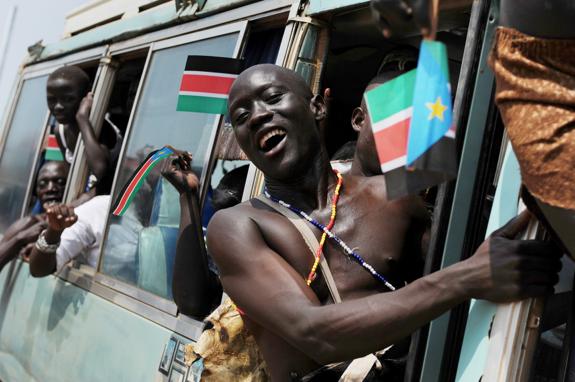
3 <https://www.foreignafairs.com/articles/sudan/2017-10-12/sanctionsand-sudan>
Obama’s promise to lift sanctions was made on several conditions including improved counterterrorism cooperation with the US and curbed violence in Darfur and other regions. Sudan has made progress with counterterrorism, leading Trump to remove Sudan from the list for his travel ban. There is also, now, better access for humanitarian aid to distressed regions. However, although regional conflicts with the government have calmed down, they are not fully over. There is also still the issue of terrorist sponsorship (the Sudanese government has only demonstrated progress in its intelligence service cooperating with the US.)3
Nonetheless, Al-Bashir’s compliance with the international community means new opportunities for his impoverished citizens. There are new hopes of foreign investments for the car and banking industries, and further opportunities are expected to arise. Despite their recent memories being ones of grief, the Sudanese can finally look to the future with optimism.

It is a small word. Two letters, one syllable. Yet “be” has more versions and is used more frequently than any other word in the English language. David Crystal’s latest book considers all its different uses in a lighthearted, humorous, easy-toread style that can be enjoyed by everyone, from linguists to crossword fanatics, and people who just generally enjoy reading.
The Story of Be is divided into 26 chapters, each chapter linked to a particular usage of the verb. As the title suggests, the book builds a narrative around “to be”, making it at times seem more like a fictional novel then a factual text. As with many novels, Crystal’s book opens with a prologue which not only draws the reader in, but resonates with the ancient origins of the verb, providing us with some very fascinating facts.

In the beginning … were three verbs.
This is a clever opening. The first actual word of the book, not including the chapter heading, is the past tense of “to be”. Not only is it a fitting beginning, but it also shows how the verb subconsciously slips into language, being a basic building block in sentences, so subtle we don’t notice it’s there. The story of “be” becomes engrossing and fascinating as we learn that the three verbs, all in Sanscrit (the Indo European language known as the ancestral parent of modern languages), were behind later manifestations of “be” which all appear in Modern English: am, be and were.
From here, Crystal takes us through the existential, obitual, and temporal forms of be, using examples from a range of sources including Hamlet, Austen, 19th century guidebooks in etiquette, and contemporary comics. Crystal also mentions a dead parrot there as well, which “is no more” and “has ceased to be” (a Monty Python reference!). From this point, he moves on to temporal uses: (Has the doctor been? Woe is me), to dialect variations: ain’t, we wuz, what have ‘ee been up to, innit, and the quotative be, of which the most used form amongst young people today is: “I was like, wow”.
By Josephine GreenlandThe closing chapters reflect on the most common uses of the verb. Increasingly in the past decade, shortcuts are used in text, be it text messages, emails, adverts, or road signs, to cut down on unnecessary words and concentrate language into short, snappy meanings. Contemporary life is about saving time, and that is reflected in the “missing be.” “On train” is easier and faster to write than “I am on the train”; headlines say “Minister attacked” instead of “Minister was attacked”. Even Disney’s contribution is featured: “I, Tarzan. You, Jane.”
Publishers: OUP Oxford
The closing chapter settles on the most recent expression, deriving from North America: the summative “is all”. “The intention is to turn a negative situation into a positive one”. Very fittingly, these are also the last words of the book.
The Story of Be is an entertaining and educational read, successfully covering all the different uses of the verb along with a rich bank of examples. It tends to remain on the surface, never discussing in detail the etymological and linguistic origins of the verb forms. Evidently, this is merely the tip of the veritable iceberg that is The Story of Be.
“Contemporary life is about saving time, and that is reflected in the “missing be.”
“On train” is easier and faster to write than “I am on the train”.”
The wonderland of the Far East: Malaysia has been visited by many, but its vast rainforests and tropical climate attract tourists in their millions again and again. Its beauty is dumbfounding, and its citizens are kind and heart-warming; it truly is a country worth discovering.
My voyage to this country began with a visit to its financial cosmopolitan centre, Kuala Lumpur in KLCC near the Petronas Towers. Kuala Lumpur embraces its past and I witnessed this in Merdeka Square, which is dominated by historically significant buildings, such as the Sultan Abdul Samad Building and the old colonial quarters. Indian Square and Chinatown offer insights into the era of mass migration of Chinese Malay and Indian Malay citizens, a subset of cultures from their nations they previously lived in. The markets in Chinatown offer goods and services at remarkably low prices and Chinese Malay cuisine is unique and satisfying. One of the most wonderous experiences in Malaysia was in Jela Lua, where there were streets filled with exciting restaurants serving local delicacies such as Satay, Nasi lemak, Mee Goreng and Apam Balik.
Moscow is an incredible city: you can find a piece of history around every corner, whether that be imposing state buildings, ornate churches, or even the impressive metro system.
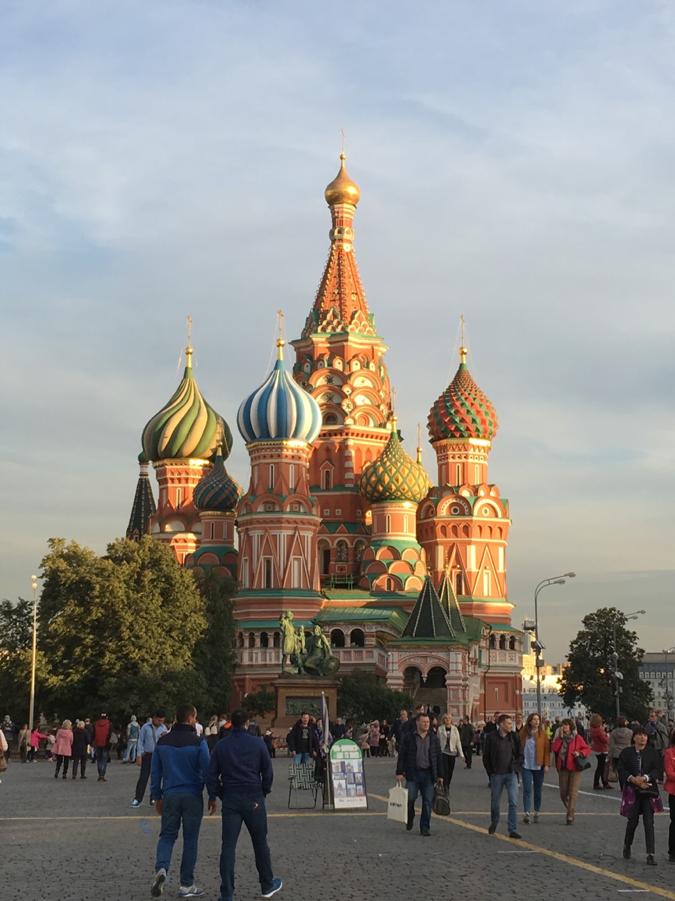
Red Square is as magnificent as any guide book makes out: from there you can admire St Basil's Cathedral, the glittering lights of the famous GUM department store, and the Lenin Mausoleum. The Kremlin is another iconic destination: once through the Spasskaya Tower Gates, you will come across the Armoury Chamber (containing Fabergé eggs), cathedrals and the Tsar Bell
The ‘Seven Sisters’ are a group of skyscrapers dotted across the Moscow skyline, including the Moscow State University, which have a distinctly Soviet-look, with towering spires and both gothic and baroque architecture. The buildings were built under the instruction of Stalin who believed Moscow needed skyscrapers to compete with capital cities across the world. Each of Moscow’s metro stations has its own character and history, full of exquisite chandeliers, mosaics, stained glass panels, and marble columns. Ploschad Revolyutsii was apparently Stalin’s favourite; 76 bronze sculptures of soldiers, school children, and factory workers guard each column and it is considered good luck to rub the golden edges of the sculptures on your way past.
My voyage then continued on to the nearby Genting Highlands, the millionaire retreat for Singapore and Malaysia’s richest. The cable car ride was an endless climb up the mountains, where a massive resort has been built. It was something quite spectacular, showing not only Malaysia’s natural beauty but also its high life.
After Kuala Lumpur, my journey continued in the remote tropical paradise of Langkawi on the beach resort of Meritus Pelingus. As interesting and enjoyable as I found Kuala Lumpur, it was nothing compared to astonishing Langkawi. Images of beachside postcards - “Heaven on Earth” -come to mind when discussing Langkawi. Sand so rich it runs through your fingers and waves which gently roll into shore, formed part a jaw-dropping view, all leading to pure incredulity. Local food and fish caught at sea lead to fantastic local food. One of the most enjoyable experiences was at a classical American hamburger restaurant titled Burger Smiths. Brilliant food for unbelievably low prices leads one to wonder how it has not become even more popular. Parasailing, Jetskiing and watersports are just the tip of the list of enjoyable things to do. A Skywalk with a view outwards to Thailand and a Seven Well waterfall leaves one amazed.
By Imogen BurgoyneOne of the many parks where you can escape the busyness of city life is Park Pobedy; constructed in honour of Russian victory in WW2, the park contains a 140-meter-high obelisk, monuments, tanks, and four beautiful memorial temples. Located down the road from the glistening park fountains is the Triumphal Arch celebrating the defeat of Napoleon’s army. amazing city.
Olivia Halsall spent the past year studying at Tsinghua University in Beijing as part of her Year Abroad. This article featuring Y, 24, Guangzhou , a recent Master’s graduate in Entrepreneurship, is part of her attempt to understand China through her travels and interviews with native Chinese citizens from all walks of life.The full article is on her blog: 66hands.wordpress.com

Last year, Y contributed to “You Have More Freedom Than You Think” ( documenting the experiences of 30 young Chinese who took a “gap year” to do something unconventional. Y is often asked how to overcome parental conflict as China’s only children deviate from their parents’ “fixed plan for their kids -- primary school, middle school, college, job, marriage, and having children”.
Chinese education expert, Xiong Bingqi, explains that Chinese parents cannot fathom a year out of education because most Chinese universities only permit deferring in exceptional circumstances, such as illness; a “gap year” would hinder one’s chances of university admission when competition is already fierce. Another factor is one’s personal citizenship file: an unexplained year could disadvantage those applying at government or state owned companies. Despite this, Chinese youth are beginning to challenge traditional expectations of education, employment, and more importantly, social status. Sun Dongchun is confident that “society is progressing and more young people will be able to have their own gap year experience.”
On his own ‘gap year’ experience, Y primarily freelanced whilst building his company’s website as he likes to be able to work anywhere. For the first 6 months, he travelled between Guangzhou and Beijing (roughly 2,140 km), choosing to leave Beijing and its cold, smog-filled winter for New Zealand
Interested to know what Y thought of the British, having just completed his Master’s in London, he told me before arriving in the UK he assumed the British would be . The characters literally translate as “tall, cold”, the closest translation I could find being “haughty”. Another word used to depict the UK, (owing to Chinese social media) was (Fûguó) which is Chinese slang referring to, “the perception of the UK as decadent for its attitudes towards sexuality”. The former image of haughty Brits formed a stark contrast with the flamboyant, modern and seemingly “decadent” supporters of homosexuals. in fact originated from Chinese social media trends and memes of various British TV series characters, that whilst we may appear cold and indifferent on the surface, we are humorous and light-hearted on the inside.
I asked Y if there is a particularly desired characteristic amongst the Chinese youth, to which he replied the spirit of being able to which translates as “to toss from side to side”, or “to be weird and wonderful (crazy)”. If an individual is daring to persist, fight and dream for something they are passionate about all whilst having a positive impact on others as a role model, then, in the eyes of the upcoming Chinese generation, they have achieved . Y told me, “If you purposely pursue success, then you are just like everyone else in China. Pursuing success isn’t necessarily a desired characteristic because it’s too common, is what the Chinese youth are now striving for.”
By definition, veganism, unlike a plant-based diet, is a lifestyle; a specific mentality and set of values which wouldn’t be broken or ignored just because you really fancy trying Italian gelato or a Greek gyro. The common view is that veganism is a rigid and restrictive diet, meaning travelling is supposed to only bring added fears and challenges in the desperate attempt to find vegan food!
It’s here where my myth-busting knowledge and experience comes into play. During my years as a vegan I have travelled a considerable amount. I’ve been from Iceland to Nepal to Greece to Berlin, and not only have I found veganism both easy and practical, but in many ways it’s completely enhanced my travelling experiences!


Often the search for vegan restaurants gives you the opportunity to explore areas unbeknown to your average tourist. Once you stray from the westernized fronts of McDonald’s and KFC, you may discover a thriving veganfriendly underworld of cultural cuisine (once I even managed to find a vegan café amongst the insanity of a Marrakech bazaar!).
Across
6. Which fruit is famous for growing on the trees of Valencia? (6)
8. What is the longest river in Asia? (7)
9. What Italian football club is known as "The Old Lady"? (8)
10. Who is the author of Don Quixote? (9)
11. Which Ukrainian territory was annexed by the Russian Federation in 2014? (6)
13. Which Russian author's works include War and Peace and Anna Karenina, Leo _? (7)
15. What painting by Edvard Munch is housed in the Oslo National Gallery? The _ (6)
16. What is the national bird of the USA? (4,5)
17. What is the currency of Turkey? (4)
18. If you were to order "fan" in a Chinese restaurant, what would you get? (4)
Down
1. What is the most popular beer in Europe? (8)
2. Who has been the head of the German Christian Democratic Union party since the year 2000? (6,6)
3. Which country will be hosting the 2018 Eurovision song contest? (8)
4. What luxury French food product is made from duck or goose liver? (4,4)
5. In which European capital city would you find the Dancing House? (6)
7. Which fashion brand has recently announced that they are going fur free? (5)
12. Which European city is the birthplace of the artist Pablo Picasso? (6)
14. Which South American country's flag has the words "Ordem e Progresso"? (6)
15. What is the name of the Japanese wine made from fermented rice? (4)
16. The famous church in Moscow's Red Square is named after which saint? (5)
Being vegan has allowed me to experience greater cultural immersion whilst travelling, and even encouraged me to a pick up a few necessities in other languages in order to communicate with locals.
Surprisingly, lots of places (such as the entire continent of Asia!) have vegan-friendly staple cuisine. But if you’re really struggling, most modern establishments have vegetarian options which more often than not can be veganized (if worst comes to worst; there’s always chips!). Another tip is to make use of apps such as Happy Cow which allows you to search for nearby vegan and vegetarian restaurants wherever you travel.
All in all, travelling is an incredible experience and there is no reason being vegan should stop you from seeing the world! The two aren’t mutually exclusive. You can even find veganism helps discover parts of a destination’s culture you never could’ve imagined!

1) Сырники - Sirniki is a traditional breakfast item made from the infamous tvorog (similar to quark or cottage cheese) – these rich patties are fried and best served with some incredibly sweet condensed milk drizzled over the top. A cup of steaming Russian black chai is just what you
 By Imogen Burgoyne
By Imogen Burgoyne
4)Cakes - Russian cakes are as ornate as their buildings; exquisite colourful delights, often topped with gold leaf and incredible chocolate work. One delicious Russian sweet is the kartoshka– a cross between a cake and a truffle. This so-called ‘chocolate potato’ is incredibly rich and will satisfy any chocolate cravings. Tort Medovik (honey cake) or Napoleon cake are also a must-have for any foodie in Russia. The speciality Raf coffee is just the sweet drink to accompany these chocolaty delights. The story has it that Rafael Timerbaev preferred his coffee with milk, so his local coffee shop created a coffee made from a shot of espresso steamed with cream and sugarthe ‘Raf’ caught on, becoming a popular drink for modern-day Muscovites! Order one of these and it will probably be served with a straw (as are the majority of Russian coffees and hot chocolates).
5)GUM ice cream - The GUM department store is located on one side of Red Square and oozes luxury. The building’s interior is simply stunning; ornate bridges and lights adorn the magnificent high ceilings and central fountains become part of displays of seasonal produce. The ice cream costs only fifty roubles and tastes amazing; it’s worth trying every flavour of the famous GUM ice cream ranging from berries to crème brulée.
2) Плов - Plov, originally from Uzbeck cuisine, is a hearty meal - perfect for a cold Russian day when you wish to glue your sides together with rice, carrots, and meat. Although relatively simple to cook, Plov takes (speaking from experience) a very long time to boil down to its sticky form, so if you plan on making it, start early! Plov is the perfect dish to pick up at a stolovaya; introduced by the Soviet government, these state canteens promoted the idea of preparing and eating food communally. Still very much popular today, stolovayas are great places to try traditional Russian food at very affordable prices.
3) Пельмени - Pelmeni are meat dumplings made using a thin unleavened dough and are perfect for a cold winters day. Pelmeni is nearly always served with a sprinkling of dill (a strong flavour and one you’ll get used to if you spend any time in Russia) and Smetana. Better known to us as sour cream, smetana is an accompaniment to most Russian dishes, both sweet and savoury. A popular Russian drink which will suit this traditional dish is Kvas. Undoubtedly a required taste, kvas is slightly alcoholic and made from fermented bread, giving it an unusual flavour of a mix between coke and beer.
6) Georgian Food - Georgian food is hearty, flavourful, and popular across Moscow. One famous and completely delicious dish is khachapuri Adjaruli – bread with two ‘handles’ topped with melted sulgni cheese and a raw


Récemment, la musique étrangère a devenu beaucoup plus populaire – peut-être à cause des chansons qui inclut les chanteurs célèbres comme Despacito avec Justin Bieber et Mi Gente avec Beyonce. Cependant, les chansons espagnoles ne sont pas la seule musique étrangère qui a gagné beaucoup d’attention cette année. La musique française et les chanteurs francophiles ont toujours reçu la recognition globale, mais plus récemment il y a eu plus des artistes qui ont été reconnu par un public plus large, ainsi que des artistes autour du monde. L’artiste Belgique Stromae est un exemple d’un chanteur francophile qui a résonné avec un public plus large dans la passé avec ses collaborations avec les artistes comme Will.I.Am et Lorde, et aussi à cause de ses concerts autour du monde y compris des Etats-Unis et l’Angleterre.
Avec l’arrivée du centenaire de la Ligue Nationale de Hockey (NHL) le mois prochain (26/11/17), étant joueur avide moimême, je plongerai dans l’histoire de ce sport et considérerai son importance dans le monde francophone.
Les principes du hockey sur glace sont très simples : c’est un sport de contacte rapide, joué sur glace entre deux équipes de six patineurs qui essaient de propulser une petite rondelle dans le but adverse avec des bâtons incurvés.
By Brittany YatesUn artiste plus nouveau qui semble d’être suivre des traces de Stromae est le rapper parisien, MHD. Ses chansons et vidéos ont millions de vues sur YouTube et Spotify et il a récemment joué aux côtés d’ASAP Rocky, Drake et Skepta dans The O2 à Londres. Il y a une grande liste des artistes francophiles qui sont très populaires dans ce moment et à mon avis, il est à cause de la différence entre la musique française et la musique internationale. La France a beaucoup de culture et des influences résonnent dans la musique des artistes francophiles comme MHD et aussi avec les artistes comme Black M et Maitre Gims qui donnent la musique francophile un avantage contre la musique internationale et qui donnent cette musique la popularité qu’elle mérite.
By Katherine EzardIl n’y a que deux règles, les deux qui concernent le positionnement de la rondelle. De plus, le contacte physique entre joueurs – oui, même les coups de poings et les bagarres – est une tradition établie (mais pas autant en Europe). Alors, n’ayez pas peur si vous assistez à une mêlée – tout cela fait partie du jeu!
Actuellement, c’est pratiqué dans 68 pays autour du monde, y compris en France et au Canada. Comme le sport national du Canada, sa popularité est ahurissante, surtout à Montréal (province du Québec), le centre mondial du hockey sur glace. L’équipe professionnelle de la ville, Les Montréal Canadiens, concourent chaque année contre les autres 6 équipes canadiennes et 24 équipes américaines dans le NHL pour la Coupe Stanley (à 125 ans, c’est le plus vieux trophée sportif d’Amérique du Nord). Le sport est aussi beaucoup joué en France ; l’équipe masculine de France est classée 14eme du monde, et le hockey sur glace féminin est de plus en plus de populaire.
Le hockey sur glace est aussi un sport prévalent des Jeux Olympiques d’Hiver – la catégorie masculine est un sport olympique permanent depuis les Jeux Olympiques d’Hiver de 1924 en France et une catégorie féminine était ajoutée aux Jeux en 1998. Cependant, les enregistrements du premier match féminin remontent aux années 1890s au Québec et le sport lui-même au milieu du XIXe siècle. Depuis, il est devenu un phénomène national au Canada et il y en a même certains qui disent que c’est « aussi canadien que la Feuille d’Erable . »
Are you deciding where to go on your year abroad next year or are you looking for some holiday inspiration? Take a look at what our fourth years have to say...


Am 11. November, wenn die Briten einen Gedenktag für Kriegsopfer haben, findet in Deutschland und vielen anderen europäischen Ländern ein fröhliches Fest statt. Dieser Tag markiert nicht nur den Anfang von Karneval, Fasching and Fastnacht, er ist zugleich der Sankt Martins Tag.
Außerdem gibt es an diesem Gedenktag im Gegenteil zu anderen kommerzialisierten Festen einer wichtigen Botschaft mit einem moralischen Hintergrund zu erinnern. Sankt Martins Tag feiert Altruismus, Großzügigkeit und Bescheidenheit, denn diese Eigenschaften sind mit dem christlichen Sankt verbunden. Die Legende besagt, dass Martin einen Bettler in der Kälte sah, aber hatte kein Essen oder Geld, welches er hätte dem Bettler geben können. Martin beschloss seinen eigenen Mantel in zwei Hälften zu schneiden und teilte diesen mit dem armen Mann.
By Megan NichollsFrüher entzündete man Fackeln für eine Lichterprozession, um der Sankt zu ehrten. Mittlerweile benutzt man natürlich kleine, batteriebetriebene Lichter, aber die Bedeutung des Brauchs bleibt immer noch. Jedes Jahr finden in viele deutsche Städten und Dörfern Martinsumzüge oder Laternenumzüge statt. Heutzutage ist dieses Fest besonders unter Kindern sehr beliebt, da sie oft ihre eigenen Laternen aus Seidenpapier basteln dürfen. Man isst selbstgebackene Kekse und viele Erwachsene trinken Glühwein, wobei man der berühmten Geschichte lauscht oder rund um ein Lagerfeuer steht. Die Teilnehmer der Umzüge singen auch traditionelle Lieder wie dieses:
„Ich geh‘ mit meiner Laterne und meine Laterne mit mir. Dort oben leuchten die Sterne und unten da leuchten wir. Mein Licht ist aus, ich geh’ nach Haus, rabimmel rabammel, rabum.“
Ich hatte die Chance diese Feier und ein paar Traditionen für mich selbst in Süddeutschland zu entdecken. Es war schön so viele verschiedene bunte Laternen zu sehen und die Kinder waren voller Stolz. Das kalte Wetter, funkelnde Lichter und fröhliche Musik machten die Atmosphäre sehr gemütlich und fast weihnachtlich. In manche Aspekte erinnerte dieser familienfreundliche Abend mich an unser „Bonfire Night“Fest. Ich kann es euch auf jeden Fall empfehlen!

Was bedeutet es deutsch zu sein? So stellt sich auch die Frage, was eine Deutsche oder einen Deutschen ausmacht? Die aktuell wachsenden politischen Strömungen zeigen, dass diese Fragen nicht einfach zu beantworten sind und es noch viel Diskurs rund um dieses Thema braucht. Die juristische Definition ist relativ klar. Jede*r mit der deutschen Staatsangehörigkeit ist Deutsche*r. Nun stellen sich aber weitere Fragen.
Kann man deutsch und muslimisch sein? Kann man deutsch und schwarz sein? Kann man deutsch sein, wenn man nicht in Deutschland geboren ist? Kann man deutsch sein, wenn die eigenen Eltern nicht in Deutschland geboren sind? Kann man deutsch sein und Chanukka statt Weihnachten feiern? Kann man deutsch sein und nicht die deutsche Staatsangehörigkeit haben? Ich will recht direkt darauf Antworten. Ja, das kann man.
Zumindest kann man das für manche Bevölkerungsgruppen. Identitäten lassen sich nicht einfach in Ossi oder Wessi, deutsch oder türkisch, schwarz oder weiß abstempeln. Identitätsbildung braucht mehr als das. Alle Deutschen einen das Grundgesetzt und seine Werte. Die Grenzen dahinter sind schwammig und situationsabhängig.
By OnurIn Deutschland bedarf es aber unbedingt einer klaren Antwort auf diese Fragen. Millionen Deutsche befinden sich in diesem Dilemma. Bei vielen Menschen führt diese Frage zu Krisen und Gefühlen von Identitätslosigkeit. Dies kann dazu beisteuern, dass Menschen, die in Deutschland geboren und aufgewachsen sind, dafür stimmen, dass Autokraten andere Länder regieren. Ich spreche über die Türkei.
Wenn Deutschland es nicht schafft ein gemeinsames, humanistisches und weltoffenes deutsch-europäisches Identitätsgefühl zu prägen, werden weitere Generationen an diesen Konflikten scheitern. Unsere Gesellschaft wird ohne den richtigen Diskurs weiter mit Phänomenen wie der rassistischen PEGIDA oder verfassungsfeindlichen Hinterhofmoscheen zu kämpfen haben. Wenn wir Fortschritt wollen, MÜSSEN wir reden.
Übrigens: Bis vor sieben Monaten hatte ich selbst noch keine deutsche Staatsangehörigkeit. Bin ich seit März plötzlich (noch) deutscher geworden als vorher? Diese Fragen und Gedanken möchte ich euch überlassen liebe Leser*innen.
Als Charlemagne uns eine „zweite Seele“ versprach, meinte er wahrscheinlich, dass das Sprachenlernen die Möglichkeit bietet, die Hochkultur anderer Länder, wie Literatur und Poesie, genießen zu können. Mamma Mia! gehörte wahrscheinlich nicht dazu. Aber für mich war es so, dass vor allem kitschige Musicals eine der größten Motivationen bildete, Deutsch zu lernen, es zu verbessern, und auch einen Teil der Deutschen Kultur live zu erleben. Im Folgenden werde ich Musicals als einen spannenden, aber oftmals unterschätzen, Teil der deutschen Kultur präsentieren. Hoffentlich kann ich euch sogar dazu ermutigen, bei euer nächsten Reise nach Deutschland ein Musical zu besuchen.
In England überwiegt die Meinung, dass die besten Theaterstücke und Musicals nur in Londons West End zu finden sind. Da dies natürlich nicht stimmt, ist es doch richtig, dass die Stadt ein Zentrum für Theater darstellt: 2014 wurden fast 50% von allen englischen Produktionen in London aufgeführt. Leider ist es schwer größere und langlaufende Produktionen außerhalb Londons zu finden, was sicherlich auch daran liegt, dass London besonders stark von Tourismus, und folglich Geld, profitiert, das die Musicalszene zum Aufblühen bringt. In Deutschland ist das anders. Wegen einer, zumindest im Vergleich zu England, gerechterenVerteilung der Staatsgelder, ist gutes Theater im Land weitverbreitet.
Weltbekannte Musicals findet man somit nicht nur in Berlin, sondern in Städten wie Hamburg, Stuttgart und sogar Oberhausen. Diese Städte haben oftmals die größten Theater und deswegen normalerweise die am längsten laufenden Musicalproduktionen. Man kann Shows wie König der Löwen, Mary Poppins oder Aladdin schauen, die aus dem Englischen übersetzt wurden. Oft werden deutsche Shows, die auf englischsprachigen Filmen basieren, aufgeführt, zum Beispiel Die Glöckner von Notre Dame oder Rocky. Diese Produktionen machen unglaublich viel Spaβ anzuschauen und haben einen großen Vorteil: wenn man die Geschichten schon kennt, ist es viel einfacher, den deutschen Produktionen zu folgen und gleichzeitig euer Deutsch auf eine entspannte Weise zu üben.
By Ruth PhillipsDeutsche Produktionen basieren natürlich nicht alle auf einem englischen Original. Es gibt tolle Originalproduktionen, wie Elisabeth, Rebecca, Tanz der Vampire und Ich War Noch Niemals in New York, die auch sehenswert sind. Diese Musicals bieten eine einzigartige Möglichkeit, deutsche Kultur hautnah zu erleben, weil sie nämlich zeigen kann, für welche Themen und Inhalte sich die Deutschen interessieren. Interessanterweise jedoch ist und bleibt das beliebteste Musical in Deutschland Starlight Express von Andrew Lloyd Webber. Diese Klassiker der Achtziger läuft in Deutschland seit 1988 und hat sogar ein spezialgefertigtes Theater in Bochum.

Die gerechtere Verteilung der Staatsgelder bedeutet, dass weniger Produktionen auf der Suche nach Profit sein müssen. In diesem Umfeld kann Theater oft kreativer und wagemutiger sein. Falls ihr in Deutschland unterwegs sein
würde ich euch einen Besuch ineinem Staats-oder Stadttheater wärmstens empfehlen. Häufig findet man dort eine Show durch Zufall, die einfach großartig anzuschauen ist. In regionalen Theatern gibt es auch oft Shows zu sehen, die mit der Gegend verbunden sind, wie zum Beispiel ein Theaterstück über die Brüder Grimm, welches letztes Jahr in einem Theater in der Nähe von Marburg aufgeführt wurde, dem Studienort der beiden Brüder. Diese Musicals bieten einen einnehmenden Weg sich in der deutlich lokalen Kultur einzuleben.
Das alles ist natürlich nur ein Bruchteil von dem, was die deutsche Theaterkultur zu bieten hat. Theaterstücke, Musicals, freie Produktionen und Konzerte gibt es fast an jede Ecke Deutschlands, sodass Theater einem Theaterfan auch ermöglicht, mehr durch Deutschland zu reisen. Musicals bietet auch eine Möglichkeit Hörverständnis live zu üben und sich auch einen deutschen Ohrwurm einzufangen. Es lohnt sich gewaltig, ein deutsches Musical zu besuchen und gleichzeitig ohne große Mühe euer Deutsch und Kulturverständnis zu erweitern!
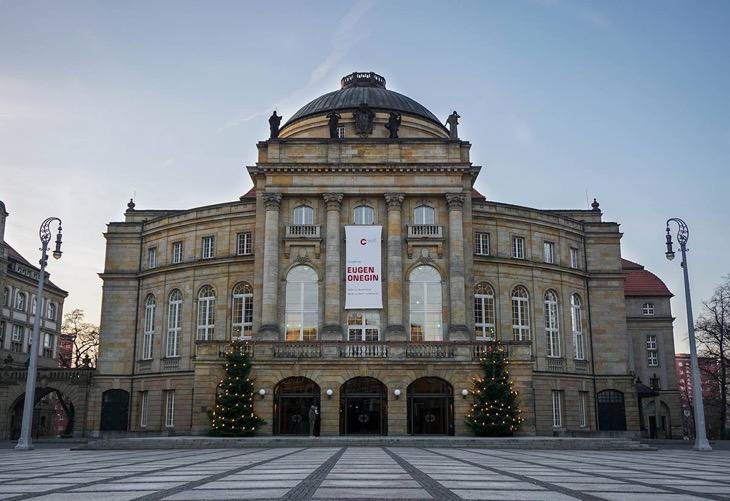
 By Valentina K Somers Kohli FESTA JUNINA
By Valentina K Somers Kohli FESTA JUNINA
São João Del-Rei é uma cidade pequena e uma municipalidade no estado de Minas Gerais no Brasil. A cidadezinha tem apenas 85,000 habitantes e é onde eu nasci e vivi até os 10 anos.
Crescendo no Brasil foi igual vivendo no meu próprio livro de conto de fadas e fantasia. Eu morei em um sitio grande que foi construído pelo meu avô, uns 40 anos atrás. O sitio é alocado aproximadamente 20 minutos do centro da cidade e é cercado por arvores e natureza. Morando em um sitio tão bonito e tão grande eu passei 80% do meu tempo no jardim brincando com meus cachorros, ajudando os jardineiros, explorando novas áreas e escalando arvores.
Todo dia era uma aventura nova. Eu via e interagia com espécies que não são muito comuns em lugares como Birmingham ou Londres. Essas espécies incluem borboletas, miquinhos, tarântulas e cobras cascavel, conhecidas como rattlesnakes na Inglaterra. A natureza foi arraigada em mim e não era uma coisa que eu achava estranha ou tinha medo de alguns aspectos, como abelhas e outros insetos.
Relembrando minha vida em São Joao é surpreendente como que eu mudei desde quando eu mudei pra Londres, um mundo completamente diferente. Morando em um mundo tão urbanizado eu me encontro desviando abelhas de medo mais no Brasil eu me lembro achando cobras nos matos e nem tremendo.
O sítio tem um ambiente feliz, calmo e cheio de paz. Até hoje, indo de férias para lá é um privilegio e eu volto pra Londres com um coração cheio. Por isso, o sítio é geralmente o perfeito lugar para ter uma festa. Dois anos atrás, minha família organizou uma Festa Junina. Essa festividade é popular no Brasil e Portugal e também uma homenagem a três santos Católicos: São João, São Pedro e Santo Antônio. A vida rural também é celebrada com as comidas, roupas e quadrilha, uma dança parecida com square dancing.

As atividades e decorações da festividade são elementos culturais e tradicionais e fazem uma parte muito grande na homenagem. Por exemplo, a luz proporcionada pela fogueira simboliza a proteção, o principal símbolo da Festa Junina pois os eventos ocorrem ao redor da fogueira. As bandeirinhas usadas para decoração, amarradas em barbante são espalhadas e penduradas pela área da festa.
No sítio, a festa foi mais ou menos tradicional. Invés de tocar musicas sertanejas e feitas para ocasião, o DJ tocou musica eletrônica. As comidas servidas
foram quase todas tradicionais da ocasião, como canjica, pipoca e quentão. Todos convidados vestiram em roupas próprias e curtiram a noite com cerveja e musica ate o nascer do sol.
Eu e meu primo quando era pequena. Estou vestindo um vestido próprio de Festa Junina
Neste momento, meu tio, tia e primos ocupam ositio mais todas vezes que vamos eles sempre nos recebam com braços abertos e as celebrações da estação começam. Esse natal eu vou pro Brasil com minha família e estamos muito empolgados para essas férias. Morando longe da sua família é difícil mais vale apena em tempos assim quando todos estamos juntos

La nit del 31 d’octubre no és gaire estrany veure gent disfressada de bruixa o fantasma pels carrers del Regne Unit, o sentir com els nens van de casa en casa trucant a les portes amb l’esperança que els donin un grapat de llaminadures. Mentrestant, a Catalunya, la nit es viu d’una altra manera.
A Catalunya, entre el 31 d’octubre i l’1 de novembre – el dia de Tots Sants - se celebra la festa de la Castanyada. Els orígens d’aquesta festa estan lligats a una festa familiar de commemoració dels difunts que es remunta al segle XVIII. La figura principal de la celebració és la castanyera, una dona vella i pagesa que ve de la muntanya als carrers de la ciutat per a vendre-hi castanyes. La castanyera va vestida de pobra i porta un cistell ple de castanyes recollides al bosc. Tradicionalment, els nens del poble li canten una cançó per a donar-li la benvinguda. Encara que les castanyes són el menjar més típic i tradicional de la festa, també hi ha altres aliments populars que en formen part.
 By Stewart Tunstall
By Stewart Tunstall
Els moniatos i els panellets (pastissos petits fets d’ametlla) són àpats molt tardorencs que se solen vendre a les parades de castanyes.
Les opinions dels catalans respecte a l’arribada del Halloween a Catalunya estan molt dividides. D’una banda, el Halloween és una de les celebracions més populars i conegudes arreu del món. D’altra banda, la Castanyada conserva i protegeix els costums culturals i el patrimoni històric del país. Encara que avui en dia la majoria dels catalans celebrin les dues festes, també hi ha gent que creu que el Halloween amenaça de desterrar la celebració de la festa popular de la Castanyada.
Caldrà veure si algun dia el Halloween acaba reemplaçant la Castanyada a Catalunya - o bé si el Halloween acaba desapareixent totalment. De moment, sembla que tradició i modernitat conviuen en aquesta diada. Us desitgem una feliç Castanyada!
By Yelyzaveta Kozii• У селі Межиріч Рівненської області знайдено найстаріше поселення Homo Sapiens. Також знайдена найстародавніша мапа, яка вибита на кістці мамонта 14,5 — 15 тисяч років тому
• Більшість українських слів починаються з літери "п". Найчастіше використовувана буква алфавіту – "о". Букви "ф" і "г" використовуються найрідше
• Найдовша печера в Україні носить назву "Оптимістична" і знаходиться на Поділлі, це гіпсова печера на глибині 20м, що тянеться на 216 км..Це найдовша гіпсова печера в світі
• Українське містечко Рахів, розташоване серед Карпат, офіційно вважається географічним центром Європи. А сама Україна є найбільшою європейською державою, вся територія якої географічно знаходиться в Європі

• Пам’ятники відомому українському поетові Тарасу Шевченку встановлені в 1200 місцях по всьому світу.
• На конкурсі краси мов в Парижі в 1934 році українська мова зайняла третє місце після французької та перської за такими критеріями, як фонетика, лексика, фразеологія, структура речень А за мелодійністю українська мова зайняла друге місце, після італійської
• Автор першої в світі Конституції - українець Пилип Орлик. 5 квітня 1710 його обрали гетьманом запорізького війська. У цей же день він оголосив «Конституцію прав і свобод війська Запорізького». У США Конституцію прийняли в 1787 р., у Франції та Польщі тільки в 1791 році
• Найдовший музичний інструмент у світі - це українська трембіта Її
Цікаві факти про Україну
Dopo aver fatto l’Erasmus in Italia, tutto cambia per sempre. Prima di partire, tutto il mondo ti avrà detto che avresti sofferto lo shock culturale in uno nuovo paese, che ti sarebbe mancata la tua famiglia, le tazze di tè e tutte le cose ben amate dell’Inghilterra. Ma nessuno ti parla di quello che succede quando ritorni, e nessuno ti prepara alla depressione post-Erasmus che provano tutti gli exerasmini mentre cerchi di continuare normalmente in questo paese freddo e piovoso.
Per chi ha fatto l’Erasmus, ecco qui una lista delle cose che ti mancheranno della Dolce Vita.
1.Viaggiare.

Ora che sei tornato alla realtà dell’ultimo anno di studi, non hai tempo libero per viaggiare durante i fine settimana. Per non parlare dei cari prezzi dei biglietti qui in Inghilterra. Tutte le persone che hanno passato tempo in Italia sapranno che viaggiare è davvero poco costoso lì. Non puoi più visitare un’altra parte del paese per meno di 10€. Spero che ti piaccia Selly Oak perchè costerebbe un sacco partire per un fine settimana.
2.Il cibo.
Abitare in Italia ti ha rovinato il cibo per sempre. Non troverai mai una pizza così buona come quelle preparate in Italia, o un piatto di pasta così gustoso. E la cosa peggiore è che queste cose costano moltissimo qui. In Italia una deliziosa pizza margherita ti sarebbe costata circa 4€, ma in Inghilterra una pizza costa più di £10, ed è probabilmente scaldata al microonde.
3.Lo spritz.
Se hai vissuto in una città italiana, saprai che tutti gli italiani prendono uno spritz Aperol a qualsiasi ora del giorno, senza avere bisogno di una giustificazione. Camminando per la città, senza dubbio avrai visto gli abitanti bersi il drink arancione. Non abbiamo una bevanda così popolare in Inghilterra, e anche se l’avessimo, non sarebbe accettabile socialmente ordinarla in un bar anche dopo la colazione… E anche se si potesse prendere uno spritz qui in Inghilterra, costerebbe £8!! No, grazie.
Dato che quasi tutte le parole finiscono in una vocale, quando un italiano parla sembra cantare una canzone. È la lingua più bella del mondo, ed era divertente esercitarsi a parlarla tutto il tempo. E, purtroppo, l’accento Brummy non suona così bene…
fa diventare pazzo. I caffè enormi e cari non sono così buoni come quelli che preparano in Italia - lì, i caffè sono piccolini e hanno un sapore buonissimo. Per non parlare del fatto che i nomi dati ai tipi di caffè qui non sono giusti. Per tua informazione, ‘lattè’ significa ‘milk’ in italiano - non è un tipo
Il Bel Paese è pieno di cultura ed architettura, ricco di storia, e c’è anche un bel clima. Quando camminavi per la strada, pensavi sempre di essere così fortunato ad abitare in un luogo così bello, ed era difficile incrociare una brutta parte del paese. Tutti vanno in bici e c’è sempre musica nelle strade. È davvero un paese bellissimo. Adesso, camminando per Selly Oak, vedi per le strade cassonetti dei rifiuti, frigoriferi rotti e spazzatura di ogni tipo. Per fortuna, il nostro campus è bellissimo, e abbiamo Old Joe quando ci mancano le torri d’orologio che si trovano in tutte le piazze d’Italia.
Il fatto è che, per quelli che hanno fatto l’Erasmus in Italia, la vita adesso in Inghilterra è dura. Gli manca tutto, dal cibo e la cultura rilassata, alla semplice bellezza del paese. E, purtroppo, adesso puoi solo sognare la Dolce Vita e fingere essere in Italia mentre mangi una triste pizza di Tesco. Ma, ovviamente, vale la pena avere la depressione post-Erasmus, perché adesso hai degli ottimi ricordi di un’esperienza all’estero che rimarranno con te per sempre.

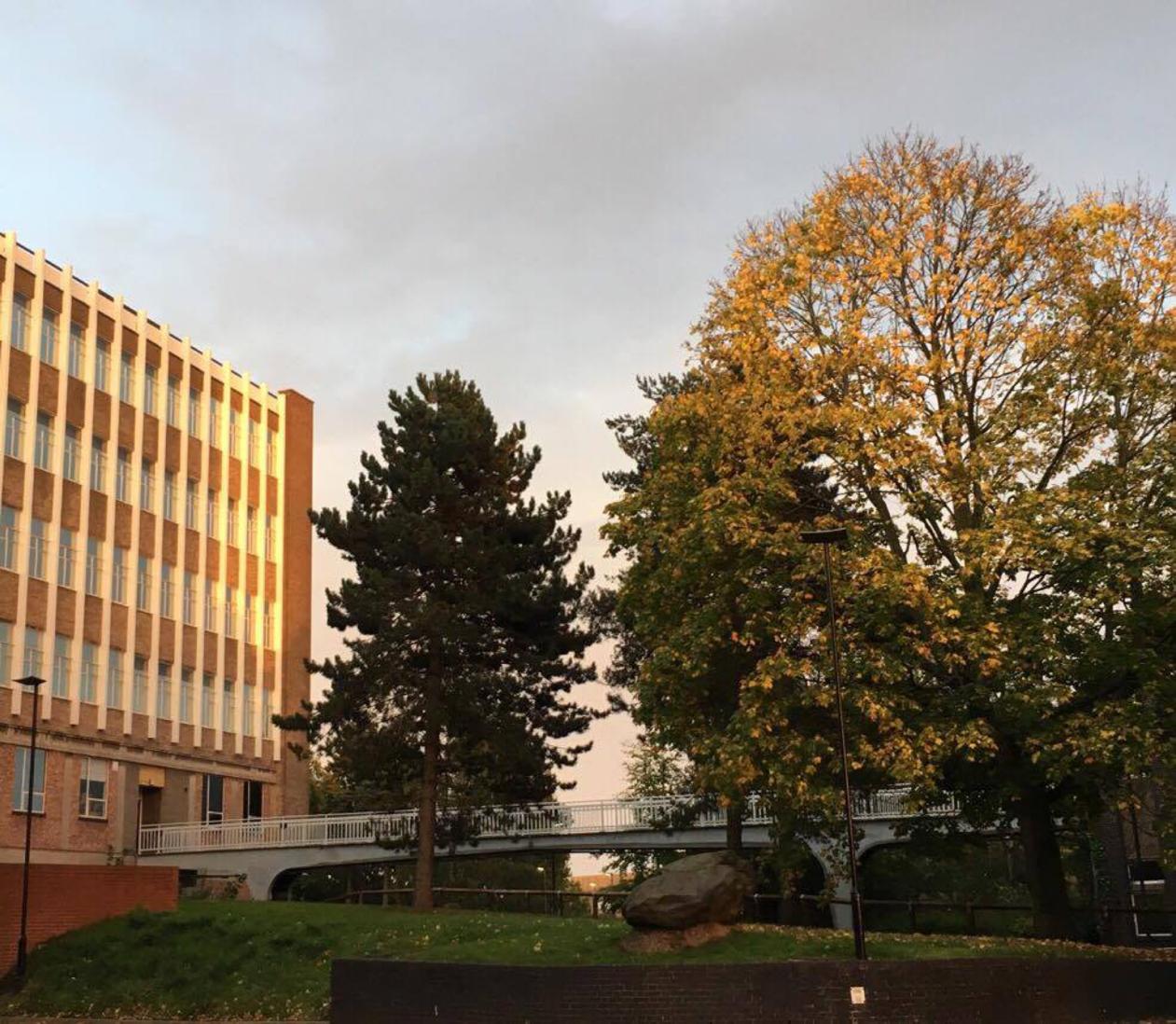

Сейчас я студентка на третьем курсе, изучаю русский и испанский языки, поэтому сейчас я живу в Москве и учусь в школе в центре города. В то время как Москва и Санкт-
By Charlotte Simpson

невероятно отличаются друг от друга, Москва может многим похвастаться. То, что мне больше всего нравиться в Москве – это большое количество ресторанов
грузинской кухни, но вот список других вещей, которые также предлагает Москва:
Современная Москва — это центр российской жизни, масса развлечений, колоссальные капитальные и денежные потоки, частью из которых, при грамотном подходе и некоторой доли везения, может воспользоваться любой предприимчивый человек. Люди приезжают в Москву работать и учиться, а многие так и остаются здесь жить Москва – огромный, полный возможностей город Сюда съезжаются тысячи людей каждый день – кто по бизнесу, кто навестить родственников, а кто-то просто в качестве туристов Безусловно, в Москве есть что посмотреть, как и коренным жителям, так и приезжим. Как-никак, это город с огромной древней историей, большим количеством музеев, памятников, достопримечательностей, театров, парков, ресторанов и концертных залов. Ответ на вопрос о том, что делать в Москве, до невозможного прост: ходить и смотреть, смотреть и поражаться. Культурная жизнь столицы России очень разнообразна и интересна В этом городе можно прекрасно отдохнуть на выходных, посмотреть что-то новое и просто провести время с удовольствием и пользой Выбор деятельности полностью зависит только от ваших предпочтений, материальных возможностей и ограничений по времени, так как вариантов того, как отдохнуть в Москве, большое количество.
Красная площадь - Если вы не знаете, чем заняться в Москве сегодня, то пойдите на Красную площадь – это гарантировано обеспечит вам множество впечатлений. Вход на эту площадь совершенно бесплатный и гулять там можно весь день, наслаждаясь
. Если же вы хотите зайти в музеи, то помните, что цены там довольно высокие Впрочем, если вы – гость столицы, то вам все-таки стоит увидеть экспозиции хотя бы один раз.
Москва-река - Многие люди, в том числе и жители Москвы, часто катаются по Москве-реке на теплоходах Это отличное начало романтического вечера для влюбленных и просто прекрасный вариант для туристов во время посещения Москвы в теплую погоду Благодаря такой прогулке можно взглянуть на город с другой стороны, увидеть множество памятников и прекрасных зданий со стороны Одно из самых известных зданий - это Храм Христа Спасителя. В вечерние часы со стороны реки он выглядит просто фантастически
Парки в Москве - Чем можно заняться в Москве на выходных? Конечно же пойти в парк Можно на выбор посетить Битцу, Сокольники, Коломенское. За всеми этими парками тщательно ухаживают Там можно выбрать себе развлечение по душе, посидеть в небольшом кафе, просто побродить по улочкам с мороженым в руке, покататься на аттракционах Особенно часто в парках Москвы проводят время семейные пары с детьми. Парки большие по площади, поэтому в них чувствуешь себя как будто вдали от мегаполиса Вся суета и проблемы большого города моментально испаряются. Также многие Москве Интернете. Там вы увидите огромный перечень концертов, представлений и выставок Можно выбрать любое мероприятие и посетить его. Особенного внимания заслуживает не так давно отремонтированный Большой театр, в котором играют лучшие театральные труппы мира. Вполне возможно, что именно сегодня там проходит спектакль, который придется вам по душе Если же вы не большой любитель театров, то можете просто пройтись по Новому Арбату – пешеходной улице с красивыми зданиями и дорогими магазинами. Покупать там что-то не обязательно, но насладиться общей атмосферой этого места непременно стоит. Кроме того, нельзя забывать про ночные прогулки по городу – вы сможете увидеть Москву совсем с другой стороны

kristen tradition? Svaret, ett av många svar, börjar redan under den högtid vi idag kallar Halloween. Barn genomgick ett test, en sorts mognadsceremoni, som avgjorde om du var redo att ta ett steg in i vuxenlivet som självständig, ansvarsfull människa. Barnens uppgift var att återuppstå som en av de döda. Barnen samlade på de dödas föremål och lämnade över dessa till andevärlden. Runt jultiden slutfördes ceremonin. Barnen som fullbordat riten och tagit sig an de dödas identiteter hade lyckats, de andra misslyckats. Shamanen samlade upp de lycksamma barnen och reste runt med dem från bondgård till bondgård. På varje plats presenterade sig barnen med sina nya namn och identiteter. Resan kallades ”den vilda resan”, och barnen, som knackade på hos folket, kan vara ursprunget till Julbocken. Namnet “Julbock” kommer förmodligen från bockarna som drog Tors släde: Tanngnost och Tanngrisni. Julbocken delade ut klapparna ända till slutet på artonhundratalet, vilket visar hur väletablerad denna tradition var.
Högtiden fortsatte in till nyår. Nyåret bestod av en symbolisk kamp mellan barnen och de vuxna, mot vinterandarna, eller s.k. skuggor. Vinterandarna släpptes in i världen under Halloween när barnen lämnade över ägodelarna. Kampen var nödvändig för att kunna gå in i det nya året med en ren själ. Detta år förmodligen ursprunget till nyårslöftena vi tar idag för att förbättra oss som individer (exempelvis att börja träna eller sluta röka). I nordisk mytologi kallas denna kamp Ragnarök. Seger är dock relativt lätt, då andarna bannlyses tillbaka till andevärlden ljus. Människorna sprang så genom skogarna och jagade bort andarna med facklor. Denna tradition lever vidare idag via fyrverkeri.
Jultomten kan kopplas direkt till Oden. Oden jade många gestalter och tilltalelsenamn. En av dessa var Julfader (Father Christmas). I Finland kallas tomten fortfarande Joulupukki: julguden. Julfadern red på sin åttabenade häst Sleipnir, vilket kan förklara varför jultomtens släde dras av åtta renar. Bilden av Odin som julfadern lär ha inspirerat Hollands Sinter Klas och den nutida uppfattningen av Jultomten.
Favourite Swedish Phrase: Swedish people don’t “seek revenge”, they give back for old cheese - (Att ge tillbaka för gammal ost).
Fler tecken på julbockens anknytning till vikingarna ser vi På festligheterna fanns en mängd föremål som förmodligen föregår de vi förknippar med jul idag. Man åt en gris för att hedra Särhymer, grisen som åts i Valhalla. Därifrån får vi julskinka. Julkransen var ett gigantiskt solhjul som rullades nedför en backe för att locka solen tillbaka. Julkakan, kallad Yule Log på engelska, och vilken förekommer oftare i brittiskt julfirande, lär härstamma från den stora veden som dekorerades med kvistar från gran, järnek och idegran. Runskrift på barken bad Gudarna att beskydda folket från olycka, och en bit (julkakan) sparades som skyddsamulett under året. Julgranen var ett träd man dekorerade med mat och kläder och gudastatyer för att locka andarna att komma tillbaka till våren.
Varför betraktas då denna högtid med tydliga fornnordiska influenser, som kristen?
Inom många hedniska religioner förknippas julen med en guds födelse. I den nordiska mytologin är det Tor (åskguden), i den romerska, Jupiter, i den Slaviska, Rod. Mönstret är att guden är förknippad med himlen, skyn. Deus, det latinska ordet för gud, översätts till stråle (ljusstråle från himlen). De flesta gudars födelse förekommer i samband med ett solstånd eller equinox, början på en ny årstid. När vikingarna kristnades är det därför sannolikt att att Jesu födelse flyttades till julafton så att den nya religionen kändes mer familjär.

The study of science, by nature, is objective. Scientific laws and phenomena are the same everywhere, regardless of country or culture. Whilst some insist that “mathematics is the language of science”, it still leaves much to be desired in its ability to communicate our ideas. A common tongue would be an invaluable addition, but how exactly is a ‘language of science’ established?
Latin used to be a very influential language in Europe, being used as a means of international scientific communication as early as the medieval period, particularly between the Roman Empire and its allies. Its use, however, waned over time; as the Romance languages developed, Latin faded into obscurity. Possible reasons include the declining influence of the Catholic Church, or the desire of researchers to make their work more accessible for the public. By the 1700s, it had been almost abandoned for scientific literature, as researchers began publishing in their native tongue. One relic that has stood the test of time is the binomial nomenclature: the system of using a two-part Latin name to describe living organisms. Similar methods were developed as early as 1623, before it was formalised by Carl Linnaeus in 1753.
The next language to take the lead in scientific communication, emerging in the 19th century, is believed to have been German. This could be down to Germany’s central position in Europe, or perhaps the ability of the language to easily create new composites —e.g. 'lichtgeschwindigkeit' (speed of light). However, it could also simply be put down to the abundance of prominent German-speaking scientists, such as Einstein, Heisenberg, Schrödinger and Freud. Perhaps the language’s precedence was simply a by-product of German and Austrian dominance in the field during this time.
 By Beth Rothwell & Daniel Thomas
By Beth Rothwell & Daniel Thomas
This was short lived, however—the most widely accepted language of science is now English. A key factor in its emergence is British colonialism; by the 1920s, the British empire contained around a quarter of all landmass, so the spread of the English language was immense. However, another cause was the result of World War II, which bred anti-German sentiment throughout Europe. This stunted the growth of the German language as a means of international communication, leaving a void for English to fill.

Nowadays, it is very commonplace to publish scientific articles in English, regardless of the country of origin. It is interesting to note that this is more extreme for physical and life sciences than it is for health and social sciences. This means that unfortunately, native English speakers have an even bigger advantage in certain fields of science.
It is estimated that between 10% and 20% of the world's population speak English, with only a third of those being native speakers. Hence, considerable efforts must be made in order to put those scientists who do not speak English on a level playing field, so that we might take full advantage of the global wealth of knowledge.

“A common tongue would be an invaluable addition, but how exactly is a ‘language of science’ established?”